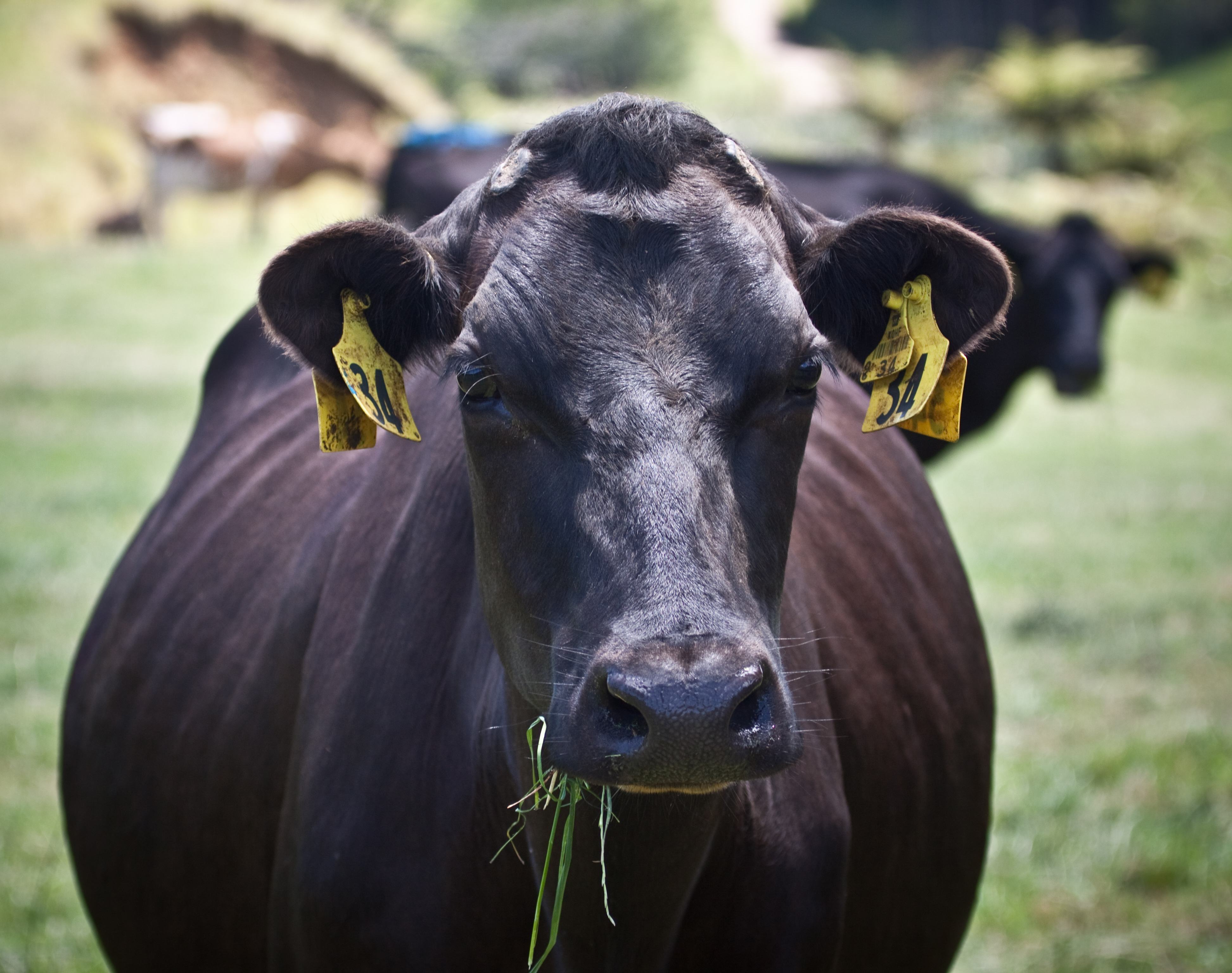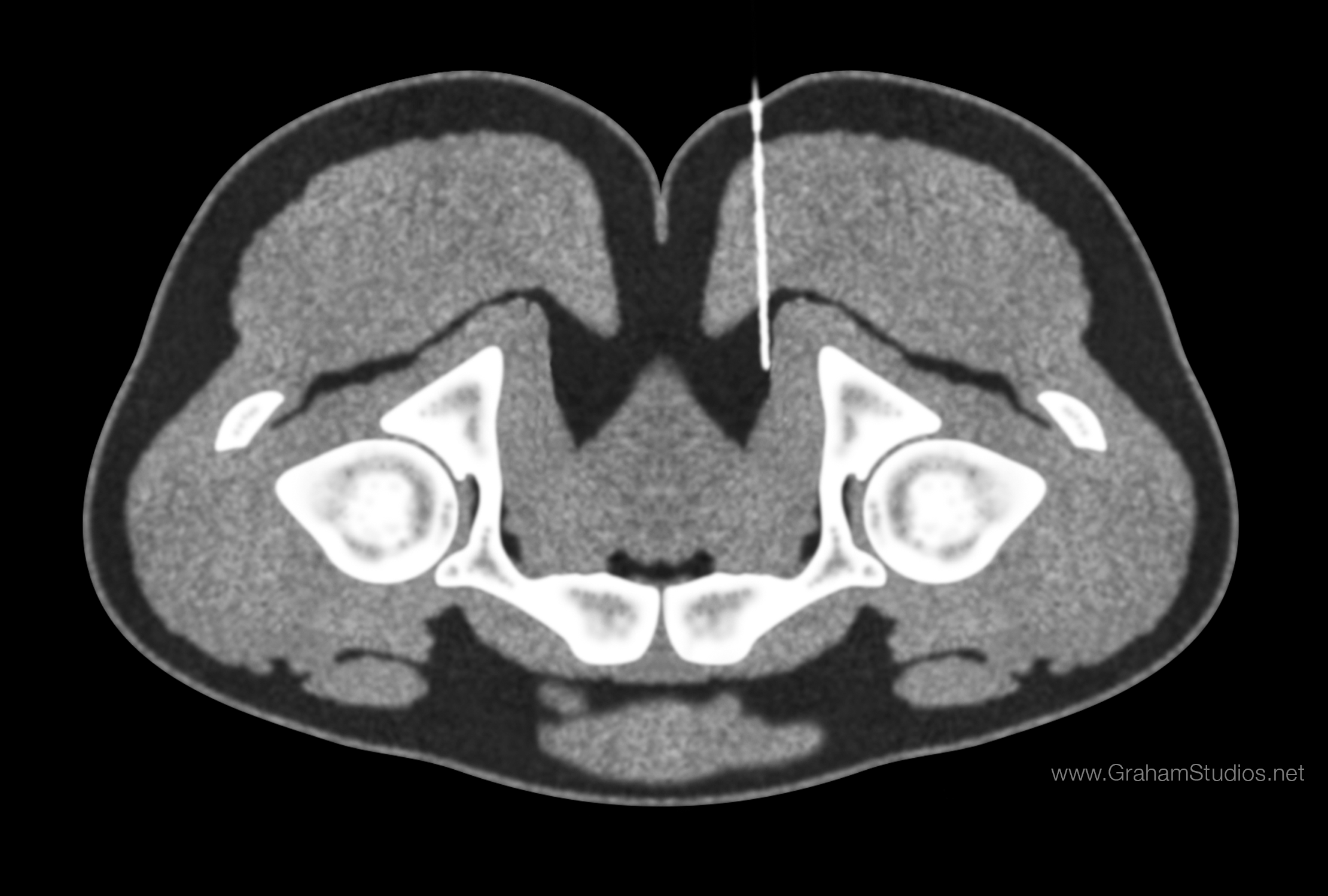|
Disbudding
Dehorning is the process of removing the horns of livestock. Cattle, sheep, and goats are sometimes dehorned for economic and safety reasons. Disbudding is a different process with similar results; it cauterizes and thus destroys horn buds before they have grown into horns. Disbudding is commonly performed early in an animal's life, as are other procedures such as docking and castration. In some cases, it can be unnecessary. Many breeds of cattle and sheep are naturally hornless. The polled gene can occur naturally, and certain breeds lack horns. Although polling is common among cattle and sheep, some varieties of livestock species cannot easily be bred to lack horns naturally. In one case, the poll gene in goats was linked to hermaphrodism in a single study several decades ago, although fertile polled goats have been bred. Horns are removed because they can pose a risk to humans, other animals and to the bearers of the horns themselves (horns are sometimes caught in fences o ... [...More Info...] [...Related Items...] OR: [Wikipedia] [Google] [Baidu] |
Polled Livestock
Polled livestock are livestock without horns in species which are normally horned. The term refers to both breeds and strains that are naturally polled through selective breeding and also to naturally horned animals that have been disbudded. Natural polling occurs in cattle, yaks, water buffalo, and goats, and in these animals it affects both sexes equally; in sheep, by contrast, both sexes may be horned, both polled, or only the females polled. The history of breeding polled livestock starts about 6000 years BC. Terminology The archaic term or is sometimes used to refer to hornless livestock (especially cattle) in folk songs, folk tales, and poetry, and in the name of the polled Irish Moiled cattle breed. "Muley" derives from Irish and Scottish Gaelic ''maol'', and Welsh ''moel''. Genetics In cattle, the polled allele is genetically dominant to that for horns. The polled trait is far more common in beef breeds than in dairy breeds. CRISPR technology is being develope ... [...More Info...] [...Related Items...] OR: [Wikipedia] [Google] [Baidu] |
Cattle
Cattle (''Bos taurus'') are large, domesticated, bovid ungulates widely kept as livestock. They are prominent modern members of the subfamily Bovinae and the most widespread species of the genus '' Bos''. Mature female cattle are called cows and mature male cattle are bulls. Young female cattle are called heifers, young male cattle are oxen or bullocks, and castrated male cattle are known as steers. Cattle are commonly raised for meat, for dairy products, and for leather. As draft animals, they pull carts and farm implements. Cattle are considered sacred animals within Hinduism, and it is illegal to kill them in some Indian states. Small breeds such as the miniature Zebu are kept as pets. Taurine cattle are widely distributed across Europe and temperate areas of Asia, the Americas, and Australia. Zebus are found mainly in India and tropical areas of Asia, America, and Australia. Sanga cattle are found primarily in sub-Saharan Africa. These types, sometime ... [...More Info...] [...Related Items...] OR: [Wikipedia] [Google] [Baidu] |
Sheep
Sheep (: sheep) or domestic sheep (''Ovis aries'') are a domesticated, ruminant mammal typically kept as livestock. Although the term ''sheep'' can apply to other species in the genus '' Ovis'', in everyday usage it almost always refers to domesticated sheep. Like all ruminants, sheep are members of the order Artiodactyla, the even-toed ungulates. Numbering a little over one billion, domestic sheep are also the most numerous species of sheep. An adult female is referred to as a ''ewe'' ( ), an intact male as a ''ram'', occasionally a ''tup'', a castrated male as a ''wether'', and a young sheep as a ''lamb''. Sheep are most likely descended from the wild mouflon of Europe and Asia, with Iran being a geographic envelope of the domestication center. One of the earliest animals to be domesticated for agricultural purposes, sheep are raised for fleeces, meat ( lamb, hogget or mutton), and milk. A sheep's wool is the most widely used animal fiber, and is usually harvested by ... [...More Info...] [...Related Items...] OR: [Wikipedia] [Google] [Baidu] |
Polled Livestock
Polled livestock are livestock without horns in species which are normally horned. The term refers to both breeds and strains that are naturally polled through selective breeding and also to naturally horned animals that have been disbudded. Natural polling occurs in cattle, yaks, water buffalo, and goats, and in these animals it affects both sexes equally; in sheep, by contrast, both sexes may be horned, both polled, or only the females polled. The history of breeding polled livestock starts about 6000 years BC. Terminology The archaic term or is sometimes used to refer to hornless livestock (especially cattle) in folk songs, folk tales, and poetry, and in the name of the polled Irish Moiled cattle breed. "Muley" derives from Irish and Scottish Gaelic ''maol'', and Welsh ''moel''. Genetics In cattle, the polled allele is genetically dominant to that for horns. The polled trait is far more common in beef breeds than in dairy breeds. CRISPR technology is being develope ... [...More Info...] [...Related Items...] OR: [Wikipedia] [Google] [Baidu] |
Adcock 2023 Disbudding Impact
Adcock is an English surname. Notable people with the surname include: * Alfred Adcock (1916–2005), English cricketer * Arthur St. John Adcock (1864–1930), English novelist, journalist and poet * Betty Adcock, American poet * Brett Adcock (born 1986), American tech entrepreneur * C. C. Adcock (born 1971), American musician * Chris Adcock, English badminton player * Clarence Lionel Adcock (1895–1967), American Army Officer * Eddie Adcock, American bluegrass musician * Fleur Adcock (1934–2024), New Zealand poet * Frank Adcock, British engineer, inventor of the Adcock antenna * Gabby Adcock, English badminton player * Sir Frank Adcock (1886–1968), English classical historian * Hugh Adcock (1903–1975), English footballer * Jamar Adcock (1917–1999), American politician and banker * Jed Adcock (born 1985), Australian rules footballer * Joe Adcock (1927–1999), Major League Baseball player * Joseph Adcock (1864–1914), English cricketer and clergyman * Levy Adcock ... [...More Info...] [...Related Items...] OR: [Wikipedia] [Google] [Baidu] |
Yoke
A yoke is a wooden beam used between a pair of oxen or other animals to enable them to pull together on a load when working in pairs, as oxen usually do; some yokes are fitted to individual animals. There are several types of yoke, used in different cultures, and for different types of oxen. A pair of oxen may be called a ''yoke of oxen'', and yoke is also a verb, as in "to ''yoke'' a pair of oxen". Other animals that may be yoked include horses, mules, donkeys, and water buffalo. Etymology The word "yoke" is believed to derive from Proto-Indo-European *yugóm (yoke), from root *''yewg''- (join, unite), and is thus cognate with '' yoga''. This root has descendants in almost all known Indo-European languages including German ''Joch'', Latin ''iugum'', Ancient Greek ζυγόν (''zygon''), Persian یوغ (''yuğ''), Sanskrit युग (''yugá''), Hittite 𒄿𒌑𒃷 (iúkan), Old Church Slavonic иго (''igo''), Lithuanian ''jungas'', Old Irish ''cuing'', and Armenian ... [...More Info...] [...Related Items...] OR: [Wikipedia] [Google] [Baidu] |
Nerve Block
Nerve block or regional nerve blockade is any deliberate interruption of signals traveling along a nerve, often for the purpose of pain relief. #Local anesthetic nerve block, Local anesthetic nerve block (sometimes referred to as simply "nerve block") is a short-term block, usually lasting hours or days, involving the injection of an anesthetic, a corticosteroid, and other agents onto or near a nerve. Neurolytic block, the deliberate temporary degeneration of nerve fibers through the application of chemicals, heat, or freezing, produces a block that may persist for weeks, months, or indefinitely. Neurectomy, the cutting through or removal of a nerve or a section of a nerve, usually produces a permanent block. Because neurectomy of a sensory nerve is often followed, months later, by the emergence of new, more intense pain, sensory nerve neurectomy is rarely performed. The concept of nerve block sometimes includes ''central nerve block'', which includes epidural and spinal anaesthe ... [...More Info...] [...Related Items...] OR: [Wikipedia] [Google] [Baidu] |
Nonsteroidal Anti-inflammatory Drug
Non-steroidal anti-inflammatory drugs (NSAID) are members of a Indication (medicine), therapeutic drug class which Analgesic, reduces pain, Anti-inflammatory, decreases inflammation, Antipyretic, decreases fever, and Antithrombotic, prevents blood clots. Side effects depend on the specific drug, its dose and duration of use, but largely include an increased risk of Stomach ulcers, gastrointestinal ulcers and bleeds, heart attack, and kidney disease. The term ''non-steroidal'', common from around 1960, distinguishes these drugs from corticosteroids, another class of anti-inflammatory drugs, which during the 1950s had acquired a bad reputation due to overuse and side-effect problems after their introduction in 1948. NSAIDs work by inhibiting the activity of cyclooxygenase enzymes (the COX-1 and COX-2 isozyme, isoenzymes). In cells, these enzymes are involved in the synthesis of key biological mediators, namely prostaglandins, which are involved in inflammation, and thromboxanes, ... [...More Info...] [...Related Items...] OR: [Wikipedia] [Google] [Baidu] |
Cauterization
Cauterization (or cauterisation, or cautery) is a medical practice or technique of burning a part of a body to remove or close off a part of it. It destroys some tissue in an attempt to mitigate bleeding and damage, remove an undesired growth, or minimize other potential medical harm, such as infections when antibiotics are unavailable. The practice was once widespread for treatment of wounds. Its utility before the advent of antibiotics was said to be effective at more than one level: *To prevent exsanguination *To close amputations Cautery was historically believed to prevent infection, but current research shows that cautery actually increases the risk for infection by causing more tissue damage and providing a more hospitable environment for bacterial growth. Actual cautery refers to the metal device, generally heated to a dull red glow, that a physician applies to produce blisters, to stop bleeding of a blood vessel, and for other similar purposes., page 16. The main f ... [...More Info...] [...Related Items...] OR: [Wikipedia] [Google] [Baidu] |
Gigli Saw
A Gigli saw is a flexible wire saw used by surgeons for bone cutter, bone cutting. A Gigli saw is used mainly for amputation, where the bones have to be smoothly cut at the level of amputation. It is also used in veterinary medicine for cutting antler, horn (anatomy), horn, and tusks, as well as bone. The saw was invented by Leonardo Gigli, an Italian Obstetrics, obstetrician, to simplify the performance of a lateral pubiotomy in obstructed labour. It is featured in the 2023 American horror film ''Saw X''. See also *Instruments used in general surgery References Orthopaedic instruments Saws Italian inventions {{medical-equipment-stub ... [...More Info...] [...Related Items...] OR: [Wikipedia] [Google] [Baidu] |






